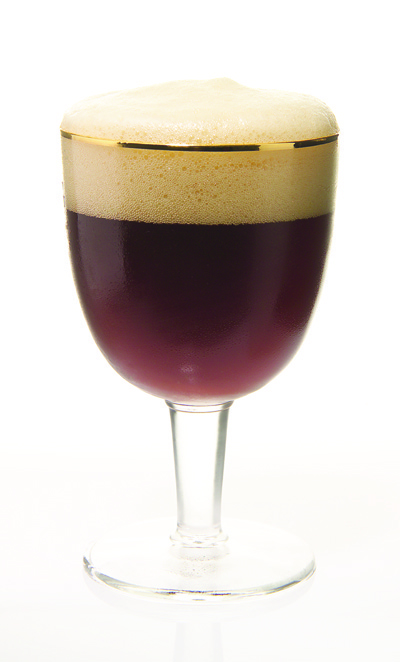High Gravity Brewing
TroubleShooting
Scott Band - Tampa, Florida asks,
Do you have suggestions for brewing a high alcohol beer? I’m trying to get one over 20%.
In order to brew high alcohol beers, three challenges must be addressed. The first is the production of wort with the potential for a high degree of fermentation. The second challenge is producing high gravity wort. The combination of high original gravity with high degree of fermentation gives you the chance of producing the big beers you seek. The third challenge is carrying out the fermentation without problems from unhappy yeast.
Brewing high alcohol beers using all-grain techniques is the most difficult approach. The first thing that will put you on the right path is to use a mash profile that results in highly fermentable wort. I like conducting a long mash that starts around 147 °F (64 °C). This step may last as long as two hours before the mash reaches 158 °F (70 °C) for about 20 minutes and then mash-off at 169 °F (76 °C).
The challenge with ultra-high alcohol beers is that the first wort gravity of a relatively thick mash is about 24 °Plato (1.101 specific gravity) and this will give you a beer with about 10% alcohol by volume. The only way to really push the original gravity higher than this when brewing all-grain beers is to use a very long boil, and when you do this some of the fermentable sugars are converted into non-fermentable components via browning reactions. The other problem, especially cost-wise, is that the pursuit of high gravity wort oftentimes sacrifices efficiency in return for strength. Some brewers make a weaker beer by collecting lower gravity runnings from the mash, but this is not always practical.
One method used by many brewers of high alcohol beers is to add fermentables to the wort in the kettle or even in the fermenter. Cane sugar, rice syrup, honey, dried malt extract (DME) and liquid malt extract (LME) are examples of some of the ingredients added to wort to boost strength.
So now we have a few ideas of how to produce high gravity wort with the potential to produce a very strong beer. The word “potential” is really important because it is the yeast that ultimately does the work. You need to use a yeast strain that is known to have a high tolerance for alcohol, pitch sufficient healthy cells and give the wort enough oxygen so that the yeast can properly divide and generate the cell membranes and organelles required for growth.
Selecting an alcohol-tolerant strain is not so difficult due to the number of yeast strains available and the really great information yeast labs provide about the strains they carry. And developing a starter with enough cells is not difficult; you simply need to use proportionally more yeast starter as the original gravity increases. Wort aeration is a true challenge since the solubility of oxygen in wort decreases as gravity increases. One way to address this inconvenient fact is to use oxygen instead of air for “aeration.” Some brewers have experimented with adding unsaturated fatty acids to wort, such as olive oil, to provide yeast cells some of the components that are synthesized using oxygen.
You can do everything mentioned earlier and still end up with a fermentation that becomes “stuck.” One of the causes of stuck fermentations is that yeast cells preferentially uptake fermentable sugars, and in the course of normal metabolism may not ferment all of the sugars present in the wort that actually can be fermented. Some brewers combat this by adding fermentable sugars, especially simple sugars like cane sugar and honey, later in the fermentation.
This actually does a few things to improve the chances of producing giant beers. For starters, it means the wort’s original gravity is not super high at the beginning of fermentation; this reduces the membrane stresses caused by high osmotic pressure, or difference in concentration between the wort and the cytoplasm of the yeast cell. The other thing that happens is that the type of sugars taken up first by yeast cells are being added after the slower-to-absorb carbohydrates have been absorbed, thereby giving yeast cells the equivalent of dessert when it is appropriate.
Finally, some brewers add fresh yeast when the fermentation stalls, basically kräusening, and some even aerate during fermentation. I like the kräusening method, but not aerating after fermentation has begun because of the potential for oxidation. Brewing very high alcohol beers, basically anything above 10% alcohol by volume, is a real challenge. Take one step at a time and work towards your target. If you cook up a batch of 40 °Plato wort and think this is the silver bullet to brewing these strong beers and do nothing else, the chances of failure and frustration are high. Be patient and may the force be with you!


